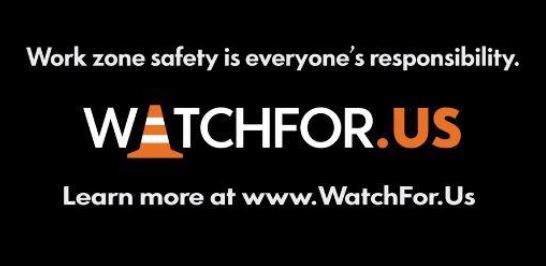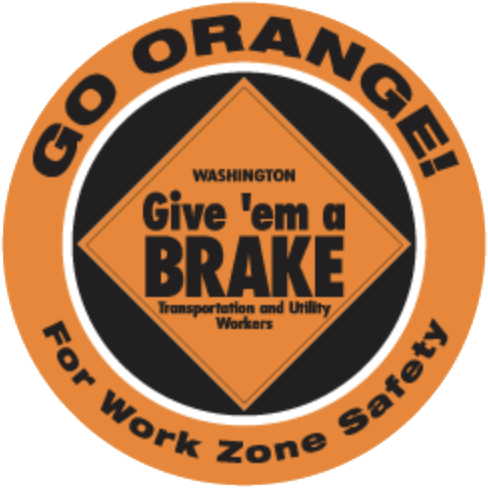References
Abraham, H. (1929). Asphalts and Allied Substances: Their Occurrence, Modes of Production, Uses in the Arts and Methods of Testing, Third Edition. D. Van Nostrand Co., Inc. New York, NY.
Baird, R.H. (2002). Asphalt. Web page on the Ancient Routes web page. Rod and Joy Baird. Available at:http://www.ancientroute.com/resource/Asphalt.htm. Accessed 9 July 2002.
Baker, I.O. (1903). Roads and Pavements. John Wiley and Sons. New York, NY.
Collins, H.J. and Hart, C.A.. (1936). Principles of Road Engineering. Edward Arnold Publishers, Ltd.. London, U.K.
Collins, H.J. and Hart, C.A. (1936). Principles of Road Engineering. Edward Arnold Publishers, Ltd.. London, U.K.
Federal Highway Administration (FHWA). (2009). Highway Statistics 2008. Office of Highway Policy Information, Federal Highway Administration. Washington, D.C. Available at:http://www.fhwa.dot.gov/policy/ohpi/hss/index.cfm . Accessed 12 October 2010.
Gillette, H.P. (1906). Economics of Road Construction. The Engineering News Publishing Co. New York, NY.
Hubbard, P. (1910). Dust Preventives and Road Binders. John Wiley and Sons. New York, NY.
Oglesby, C.H. and Hewes, L.I. (1962). Highway Engineering, Second Edition. John Wiley and Sons. New York, NY.
Smiles, S. (1904). Lives of the Engineers — Metcalfe-Telford. John Murray. London, U.K.
Steele, G.W. and B.F. Himmelman. (November, 1986). A Dynamic Committee in a Century of Change. ASTM Standardization News. American Society for Testing and Materials. West Conshohocken, PA.
United States Department of Transportation (USDOT). (2000). Comprehensive Truck Size and Weight Study. United States Department of Transportation. Washington, D.C. Available at: http://www.fhwa.dot.gov/reports/tswstudy/index.htm.
Bloomquist, D.; Diamond, G.; Oden, M.; Ruth, B. and Tia, M. (1993). Engineering and Environmental Aspects of Recycled Materials for Highway Construction. Western Research Institute for U.S. Department of Transportation, Federal Highway Administration, McLean, VA and U.S. Environmental Protection Agency, Cincinnati, OH.
Federal Highway Administration. (2001). Reclaimed Asphalt Pavement User Guideline: Asphalt Concrete (Hot Recycling). Web page on the Turner-Fairbanks Highway Research Center web site. http://www.tfhrc.gov/hnr20/recycle/waste/rap132.htm. Accessed 16 October 2010.
Federal Highway Administration (FHWA). (1998). Assessing the Results of the Strategic Highway Research Program. Publication No. FHWA-SA-98-008. Federal Highway Administration. Washington D.C.
Northeast Center for Excellence for Pavement Technology (NECEPT). (2004). Superpave System. Web page on the NECEPT web site. The Pennsylvania Transportation Institute, Pennsylvania State University. University Park, PA. http://www.superpave.psu.edu/superpave/system.html. Accessed 12 October 2010.
National Stone, Sand and Gravel Association (NSSGA). (1991). The Aggregate Handbook. National Stone, Sand & Gravel Association. Arlington, VA.
National Stone, Sand and Gravel Association (NSSGA). (2010). What is NSSGA? From the NSSGA Web site.http://nssga.org/communications/whoweare.cfm . Accessed 12 October 2010.
Roberts, F.L.; Kandhal, P.S.; Brown, E.R.; Lee, D.Y. and Kennedy, T.W. (1996). Hot Mix Asphalt Materials, Mixture Design, and Construction. National Asphalt Pavement Association Education Foundation. Lanham, MD.
Asphalt Institute. (1962). The Asphalt Handbook. Manual Series No. 4 (MS-4). Asphalt Institute. Lexington, KY.
Handy, R.L. (1995). The Day the House Fell. ASCE Press. New York.
Asphalt Institute. (1997). Mix Design Methods for Asphalt, Manual Series No. 2 (MS-02). Asphalt Institute. Lexington, KY.
Asphalt Institute. (2001). Superpave Mix Design. Superpave Series No. 2 (SP-02). Asphalt Institute. Lexington, KY.
Highway Research Board. (1961). The AASHO Road Test: Report 1, History and Description of the Project. Special Report 61A. Highway Research Board, National Academy of Sciences. Washington, D.C.
Transportation Research Board (TRB). (2001). Perpetual Bituminous Pavements. Transportation Research Circular No. 503. Transportation Research Board, National Research Council. Washington, D.C. http://www.asphaltalliance.com.
Transportation Research Board (TRB). (2000). Hot-Mix Asphalt Paving Handbook 2000. Transportation Research Board, National Research Council. Washington, D.C.
Texas Department of Transportation (TxDOT). (2001). Technical Advisory: Proper Use of Tack Coat. Technical Advisory 2001-1. Texas Department of Transportation. Austin, TX.
Scherocman, J.A. (1984, March). Guidelines for Compacting Asphalt Concrete Pavement. Better Roads, Vol. 54, No. 3. pp. 12-17.
Scherocman, J.A. and Martenson, E.D. (1984). Placement of Asphalt Concrete Mixtures. Placement and Compaction of Asphalt Mixtures, F.T. Wagner, Ed. ASTM Special Technical Publication 829. American Society for Testing and Materials. Philadelphia, PA. pp. 3-27.
Geller, M. (1984). “Compaction Equipment for Asphalt Mixtures.” Placement and Compaction of Asphalt Mixtures, F.T. Wagner, Ed. ASTM Special Technical Publication 829. American Society for Testing and Materials. Philadelphia, PA. pp. 28-47.
Hughes, C.S. (1989). National Cooperative Highway Research Program Synthesis of Highway Practice 152: Compaction of Asphalt Pavement. Transportation Research Board, National Research Council. Washington, D.C.
Hughes, C.S. (October 1984). “Importance of Asphalt Compaction.” Better Roads, Vol. 54, No. 10. pp. 22-24.
Bell, C.A.; Hicks, R.G. and Wilson, J.E. (1984). Effect of Percent Compaction on Asphalt Mixture Life. Placement and Compaction of Asphalt Mixtures, F.T. Wagner, Ed. ASTM Special Technical Publication 829. American Society for Testing and Materials. Philadelphia, PA. pp. 107-130.
Williams, R.C.; Duncan, G. and White, T.D. (1996). Hot-Mix Asphalt Segregation: Measurement and Effects. In Transportation Research Record 1543. Transportation Research Board, National Research Council. Washington, D.C. pp. 97-105.
Brown, E.R. and Brownfield, J.R. (1988). Investigation of Rutting and Segregation of Asphalt Mixtures in the State of Georgia. Georgia Department of Transportation.
Cross, S.A. and Brown, E.R. (1993). Effect of Segregation on Performance of Hot-Mix Asphalt. In Transportation Research Record 1417. Transportation Research Board, National Research Council. Washington, D.C. pp. 117-126.
Willoughby, K.A.; Mahoney, J.P.; Pierce, L.M.; Uhlmeyer, J.S.; Anderson, K.W.; Read, S.A.; Muench, S.T.; Thompson, T.R. and Moore, R. (2001). Construction-Related Asphalt Concrete Pavement Temperature Differentials and the Corresponding Density Differentials. WA-RD 476.1. Washington State Department of Trasportation. Olympia, WA. http://www.wsdot.wa.gov/Research/Reports/400/476.1.htm
Hicks, R.G. and Mahoney, J.P. (July 1981). National Cooperative Highway Research Program Synthesis of Highway Practice 76: Collection and Use of Pavement Condition Data. Transportation Research Board, National Research Council. Washington, D.C.
University of Michigan Transportation Research Institute (UMTRI). (2010). Road RoughnessHome Page. http://www.umtri.umich.edu/divisionPage.php?pageID=62. Accessed 13 October 2010.
Sayers, M.W.; Gillespie, T.D. and Paterson, D.W.O. (1986). Guidelines for Conducting and Calibrating Road Roughness Measurements. Technical Paper No. 46. The World Bank. Washington, D.C.
Highway Research Board. (1970). Special Report No. 113: Standard Nomenclature and Definitions for Pavement Components and Deficiencies. Highway Research Board, National Academy of Sciences, Washington, D.C.
Highway Research Board. (1972). National Cooperative Highway Research Program Synthesis of Highway Practice 14: Skid Resistance. Highway Research Board, National Academy of Sciences, Washington, D.C.
Jayawickrama, P.W. and Thomas, B. (1998). Correction of Field Skid Measurements for Seasonal Variations in Texas. Transportation Research Record 1639. Transportation Research Board, National Research Council, Washington, D.C. pp. 147-154.
Deighton. (1997). Pavement Condition, vol. 3. Videotape from the dTV (Deighton Television) Library video series on pavement management system topics. Deighton Associated, Ltd. Bowmanville, Ontario.
Walls, J. and Smith, M.R. (1998). Life-Cycle Cost Analysis in Pavement Design. FHWA report FHWA-SA-98-079. Federal Highway Administration. Washington, D.C. http://isddc.dot.gov/OLPFiles/FHWA/013017.pdf.
National Asphalt Pavement Association (NAPA). (1995). Thin Hot Mix Asphalt Surfacings, Informational Series 110. National Asphalt Pavement Association. Lanham, MD.
Federal Highway Administration (FHWA). (June 1998). Long-Term Monitoring of Pavement Maintenance Materials Test Sites, Publication No. FHWA-RD-98-073. Office of Engineering Research and Development, Federal Highway Administration. McLean, VA.
University of California Institute of Transportation Studies (ITS). (2000). South Africa / United States Pavement Technology Workshop, Module 3: Pavement Structural Design. Seminar given from 20 – 23 March 2000 at the University of California Field Station. Richmond, CA.
Monismith, C.L. and Finn, F.N. (1984). National Cooperative Highway Research Program Synthesis of Highway Practice 116: Asphalt Overlay Design Procedures. Transportation Research Board, National Research Council. Washington, D.C.



